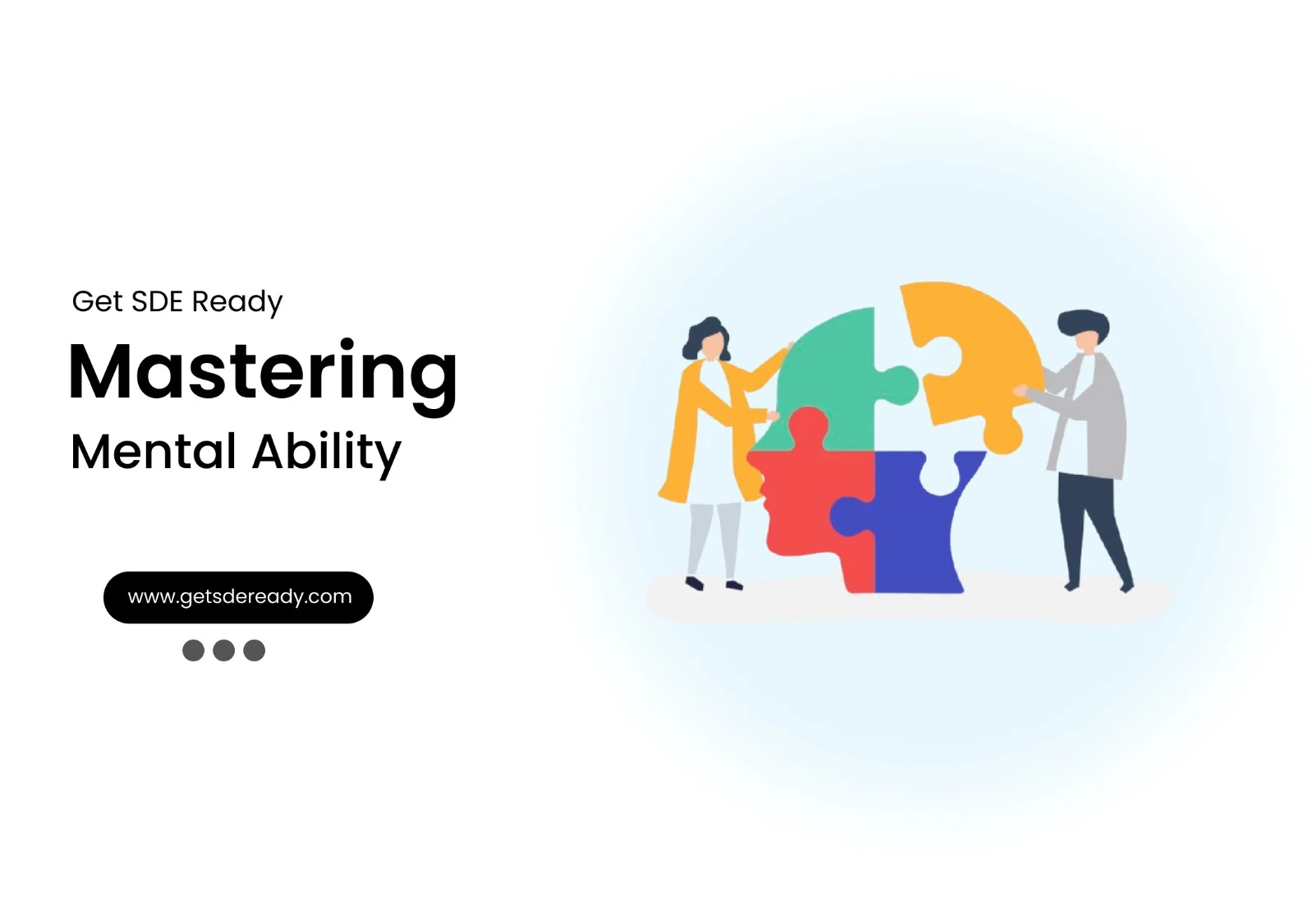Data Structures and Algorithms
- Introduction to Data Structures and Algorithms
- Time and Space Complexity Analysis
- Big-O, Big-Theta, and Big-Omega Notations
- Recursion and Backtracking
- Divide and Conquer Algorithm
- Dynamic Programming: Memoization vs. Tabulation
- Greedy Algorithms and Their Use Cases
- Understanding Arrays: Types and Operations
- Linear Search vs. Binary Search
- Sorting Algorithms: Bubble, Insertion, Selection, and Merge Sort
- QuickSort: Explanation and Implementation
- Heap Sort and Its Applications
- Counting Sort, Radix Sort, and Bucket Sort
- Hashing Techniques: Hash Tables and Collisions
- Open Addressing vs. Separate Chaining in Hashing
- DSA Questions for Beginners
- Advanced DSA Questions for Competitive Programming
- Top 10 DSA Questions to Crack Your Next Coding Test
- Top 50 DSA Questions Every Programmer Should Practice
- Top Atlassian DSA Interview Questions
- Top Amazon DSA Interview Questions
- Top Microsoft DSA Interview Questions
- Top Meta (Facebook) DSA Interview Questions
- Netflix DSA Interview Questions and Preparation Guide
- Top 20 DSA Interview Questions You Need to Know
- Top Uber DSA Interview Questions and Solutions
- Google DSA Interview Questions and How to Prepare
- Airbnb DSA Interview Questions and How to Solve Them
- Mobile App DSA Interview Questions and Solutions
DSA Interview Questions
- DSA Questions for Beginners
- Advanced DSA Questions for Competitive Programming
- Top 10 DSA Questions to Crack Your Next Coding Test
- Top 50 DSA Questions Every Programmer Should Practice
- Top Atlassian DSA Interview Questions
- Top Amazon DSA Interview Questions
- Top Microsoft DSA Interview Questions
- Top Meta (Facebook) DSA Interview Questions
- Netflix DSA Interview Questions and Preparation Guide
- Top 20 DSA Interview Questions You Need to Know
- Top Uber DSA Interview Questions and Solutions
- Google DSA Interview Questions and How to Prepare
- Airbnb DSA Interview Questions and How to Solve Them
- Mobile App DSA Interview Questions and Solutions
Introduction to High-Level System Design
System Design Fundamentals
- Functional vs. Non-Functional Requirements
- Scalability, Availability, and Reliability
- Latency and Throughput Considerations
- Load Balancing Strategies
Architectural Patterns
- Monolithic vs. Microservices Architecture
- Layered Architecture
- Event-Driven Architecture
- Serverless Architecture
- Model-View-Controller (MVC) Pattern
- CQRS (Command Query Responsibility Segregation)
Scaling Strategies
- Vertical Scaling vs. Horizontal Scaling
- Sharding and Partitioning
- Data Replication and Consistency Models
- Load Balancing Strategies
- CDN and Edge Computing
Database Design in HLD
- SQL vs. NoSQL Databases
- CAP Theorem and its Impact on System Design
- Database Indexing and Query Optimization
- Database Sharding and Partitioning
- Replication Strategies
API Design and Communication
Caching Strategies
- Types of Caching
- Cache Invalidation Strategies
- Redis vs. Memcached
- Cache-Aside, Write-Through, and Write-Behind Strategies
Message Queues and Event-Driven Systems
- Kafka vs. RabbitMQ vs. SQS
- Pub-Sub vs. Point-to-Point Messaging
- Handling Asynchronous Workloads
- Eventual Consistency in Distributed Systems
Security in System Design
Observability and Monitoring
- Logging Strategies (ELK Stack, Prometheus, Grafana)
- API Security Best Practices
- Secure Data Storage and Access Control
- DDoS Protection and Rate Limiting
Real-World System Design Case Studies
- Distributed locking (Locking and its Types)
- Memory leaks and Out of memory issues
- HLD of YouTube
- HLD of WhatsApp
System Design Interview Questions
- Adobe System Design Interview Questions
- Top Atlassian System Design Interview Questions
- Top Amazon System Design Interview Questions
- Top Microsoft System Design Interview Questions
- Top Meta (Facebook) System Design Interview Questions
- Top Netflix System Design Interview Questions
- Top Uber System Design Interview Questions
- Top Google System Design Interview Questions
- Top Apple System Design Interview Questions
- Top Airbnb System Design Interview Questions
- Top 10 System Design Interview Questions
- Mobile App System Design Interview Questions
- Top 20 Stripe System Design Interview Questions
- Top Shopify System Design Interview Questions
- Top 20 System Design Interview Questions
- Top Advanced System Design Questions
- Most-Frequented System Design Questions in Big Tech Interviews
- What Interviewers Look for in System Design Questions
- Critical System Design Questions to Crack Any Tech Interview
- Top 20 API Design Questions for System Design Interviews
- Top 10 Steps to Create a System Design Portfolio for Developers
Introduction to Data Structures and Algorithms
Data Structures and Algorithms (DSA) form the backbone of computer science, powering everything from simple applications to complex systems that run modern businesses. This article is designed to guide you through the basics and help you understand how data structures and algorithms work in a clear, accessible way. If you are eager to stay updated on the latest free courses or receive timely updates on cutting‐edge learning resources, consider signing up via our exclusive enrollment form here.
In today’s digital world, the efficiency of programs and applications is heavily influenced by the way information is stored, managed, and processed. Whether you are a complete beginner or looking to sharpen your programming skills, understanding DSA is essential. Let’s explore what data structures and algorithms really are, examine their practical applications, and discover how you can master them to build efficient solutions.
Understanding Data Structures
Data structures are organized ways to store, manage, and retrieve information. They enable programmers to handle data efficiently and determine the best ways to perform operations such as searching, inserting, or deleting data. Understanding data structures is crucial for any programmer looking to develop scalable and efficient solutions.
Types of Data Structures
Data structures come in various forms, each suited to different kinds of tasks. Let’s break down some common types:
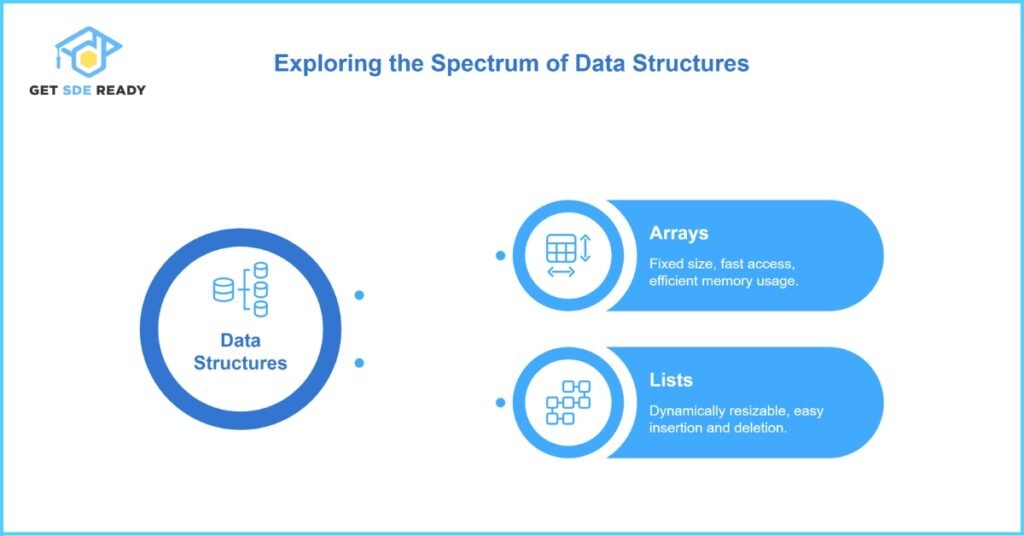
Table: Factors Influencing Space Complexity
Factor | Impact on Space | Examples |
Data Structures | Varies with implementation details | Linked lists vs. arrays |
Auxiliary Data | Increases total memory usage | Temporary storage in sorting algorithms |
Input Size | Directly proportional to allocated space | Large files in data processing |
Each factor should be studied closely, and techniques to optimize space usage can be learned through practical applications like a DSA crash course. This course is designed to help you quickly grasp core concepts in complexity analysis, ensuring you can build efficient and scalable software.
Importance of Complexity Analysis in Software Development
Assessing the time and space complexity of algorithms is not just theoretical; it directly impacts the quality and efficiency of software products. By evaluating complexity, developers can make informed decisions that result in faster, more resource-efficient applications.
Optimizing Performance
An in-depth complexity analysis enables you to pinpoint bottlenecks within your code. When you streamline these areas, the overall performance of your software significantly improves. For example, a study by reputable sources has shown that optimizing time complexity can reduce execution time by up to 70% in certain cases.
Optimization Strategies:
Refining loops and conditional statements
Using more efficient data structures and algorithms
Minimizing redundant calculations
A software project that applies these strategies, such as a web development course that integrates complexity analysis, tends to yield a product with superior performance metrics. Enhancing performance not only makes applications faster but can also improve user satisfaction and system reliability.
Benefits:
Faster execution and reduced latency.
Improved resource management and scalability.
Enhanced user experience and competitiveness in the market.
Resource Allocation and Efficiency
Analyzing complexity provides clarity on the resources needed for a particular algorithm. When managing memory allocation and computing power, organizations can better plan their infrastructure investments and scale resources effectively.
Key Considerations:
Budget: Efficient algorithms reduce costs by minimizing hardware requirements.
Scalability: Applications that use less memory and compute power scale smoothly.
Reliability: Well-optimized systems are less likely to experience failures due to resource overload.
A successful implementation can even be seen in real-life scenarios such as competitive programming challenges or practical projects from a master DSA Web Dev System Design program. Such initiatives help developers understand the direct impact of complexity on both performance and operational costs.
Practical Applications and Examples
Real-world applications benefit tremendously from a deep understanding of time and space complexity. Practical examples not only illuminate theoretical concepts but also demonstrate how such analysis drives tangible improvements in software performance.
Case Studies in Algorithm Optimization
Organizations across different sectors have applied complexity analysis to streamline operations and optimize products. A notable case study involves optimizing search algorithms for e-commerce platforms. By shifting from a quadratic approach to a logarithmic one, the search functionality improved by an impressive margin, resulting in faster page loads and an enhanced user experience.
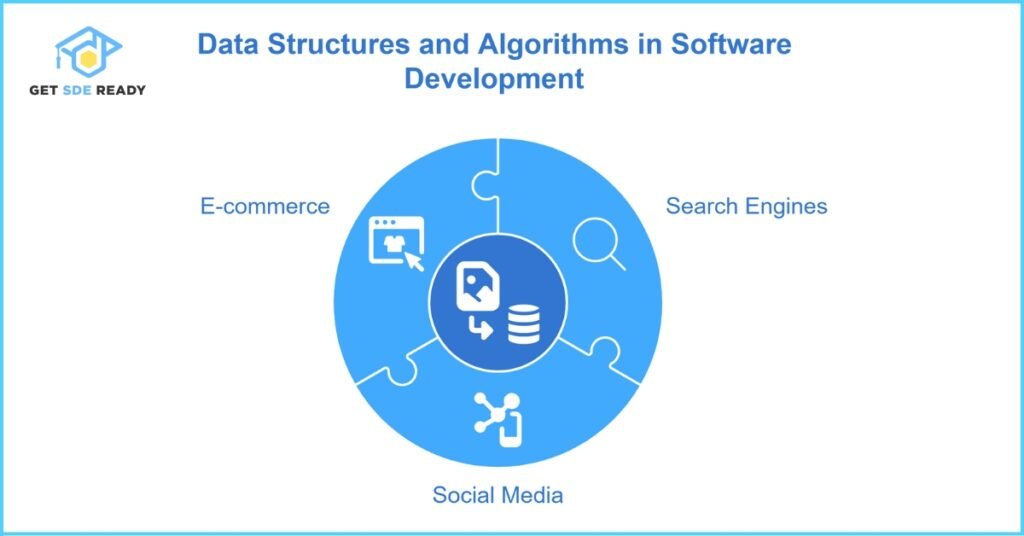
Advanced Topics and Future Directions
As you delve deeper into DSA, exploring advanced topics can provide a competitive edge, especially when combined with modern technologies.
System Design and Software Engineering
Complex software systems require more than basic algorithms—they demand robust architectural planning.
Integrating DSA into System Design
Applying data structures and algorithms within system design is key to building scalable applications. This involves leveraging design patterns, optimizing inter-module communication, and ensuring modular code that can grow with the system.
Key Points:
- Emphasize modularity and code reuse.
- Optimize communication channels between system components.
- Employ industry-standard frameworks to support scalability.
Real-World Applications in Engineering
Major tech companies—especially those dealing with distributed systems and cloud computing—depend on robust DSA principles to maintain system performance. For deeper insights into system-level challenges, consider enrolling in the Master DSA & Web Dev System Design course.
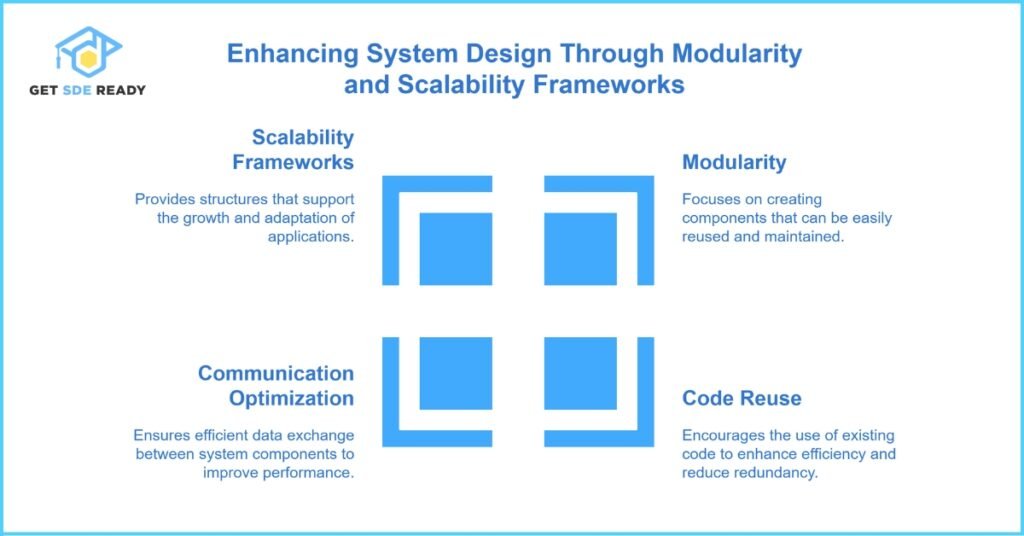
Data Science Integration with DSA
Data science increasingly relies on efficient data processing. Optimized data structures play a vital role in tasks ranging from data preprocessing to model evaluation.
Enhancing Data Processing
Streamlined data processing is essential for effective machine learning and analytics. Using the right data structures can drastically cut down preprocessing time and improve overall model performance.
Key Insights:
- Use optimized structures for rapid data manipulation.
- Improve data cleaning and transformation steps.
- Enhance model training with efficient algorithms.
Table: Data Science and DSA Synergy
Aspect | Benefit | Example Application |
Data Preprocessing | Faster transformation of datasets | Machine learning pipelines |
Feature Extraction | Efficient data management | Natural language processing |
Model Evaluation | Quick performance assessment | Statistical analysis |
For those looking to specialize in this intersection, explore a targeted Data Science course that integrates practical DSA applications.
Career and Interview Preparation
A solid grasp of DSA is critical for succeeding in technical interviews. Focused preparation can make a significant difference when facing challenging interview questions.
Dedicated resources can provide the guidance you need:
- The top 20 DSA interview questions resource offers fundamental insights to kickstart your preparation.
- For industry-specific guidance, review the Netflix DSA interview questions 2025.
- To delve into company-specific strategies, the Meta Facebook DSA interview preparation guide is worth a look.
- If you’re targeting e-commerce giants, the Amazon DSA interview preparation guide can refine your approach.
- And finally, the Atlassian DSA interview solutions guide provides additional strategies to excel.
Each of these resources addresses a unique aspect of the interview process, ensuring that you are well-equipped for any challenge.
What are the primary benefits of learning Data Structures and Algorithms?
Learning Data Structures and Algorithms lays a strong foundation for efficient problem solving and software development. It not only improves your programming skills but also enhances your ability to design scalable and efficient solutions. For those looking to take the next step, enrolling in a dedicated DSA course can provide a structured curriculum along with real-world applications that reinforce theoretical concepts.
How can I integrate DSA skills into my current development projects?
Integrating DSA skills into existing projects begins with assessing the current data handling methods and identifying areas for improvement. By replacing inefficient code with optimized algorithms and data structures, you can significantly boost performance and resource management. Consider exploring a comprehensive Web Development course that demonstrates how modern frameworks incorporate advanced DSA techniques into practical solutions.
What advanced resources are available for enhancing my DSA knowledge?
Table: Factors Influencing Space Complexity
Factor | Impact on Space | Examples |
Data Structures | Varies with implementation details | Linked lists vs. arrays |
Auxiliary Data | Increases total memory usage | Temporary storage in sorting algorithms |
Input Size | Directly proportional to allocated space | Large files in data processing |
Each factor should be studied closely, and techniques to optimize space usage can be learned through practical applications like a DSA crash course. This course is designed to help you quickly grasp core concepts in complexity analysis, ensuring you can build efficient and scalable software.
Importance of Complexity Analysis in Software Development
Assessing the time and space complexity of algorithms is not just theoretical; it directly impacts the quality and efficiency of software products. By evaluating complexity, developers can make informed decisions that result in faster, more resource-efficient applications.
Optimizing Performance
An in-depth complexity analysis enables you to pinpoint bottlenecks within your code. When you streamline these areas, the overall performance of your software significantly improves. For example, a study by reputable sources has shown that optimizing time complexity can reduce execution time by up to 70% in certain cases.
Optimization Strategies:
- Refining loops and conditional statements
- Using more efficient data structures and algorithms
- Minimizing redundant calculations
A software project that applies these strategies, such as a web development course that integrates complexity analysis, tends to yield a product with superior performance metrics. Enhancing performance not only makes applications faster but can also improve user satisfaction and system reliability.
Benefits:
- Faster execution and reduced latency.
- Improved resource management and scalability.
- Enhanced user experience and competitiveness in the market.
Resource Allocation and Efficiency
Analyzing complexity provides clarity on the resources needed for a particular algorithm. When managing memory allocation and computing power, organizations can better plan their infrastructure investments and scale resources effectively.
Key Considerations:
- Budget: Efficient algorithms reduce costs by minimizing hardware requirements.
- Scalability: Applications that use less memory and compute power scale smoothly.
- Reliability: Well-optimized systems are less likely to experience failures due to resource overload.
A successful implementation can even be seen in real-life scenarios such as competitive programming challenges or practical projects from a master DSA Web Dev System Design program. Such initiatives help developers understand the direct impact of complexity on both performance and operational costs.
Practical Applications and Examples
Real-world applications benefit tremendously from a deep understanding of time and space complexity. Practical examples not only illuminate theoretical concepts but also demonstrate how such analysis drives tangible improvements in software performance.
Case Studies in Algorithm Optimization
Organizations across different sectors have applied complexity analysis to streamline operations and optimize products. A notable case study involves optimizing search algorithms for e-commerce platforms. By shifting from a quadratic approach to a logarithmic one, the search functionality improved by an impressive margin, resulting in faster page loads and an enhanced user experience.

DSA, High & Low Level System Designs
- 85+ Live Classes & Recordings
- 24*7 Live Doubt Support
- 400+ DSA Practice Questions
- Comprehensive Notes
- HackerRank Tests & Quizzes
- Topic-wise Quizzes
- Case Studies
- Access to Global Peer Community
Buy for 52% OFF
₹25,000.00 ₹11,999.00
Accelerate your Path to a Product based Career
Boost your career or get hired at top product-based companies by joining our expertly crafted courses. Gain practical skills and real-world knowledge to help you succeed.
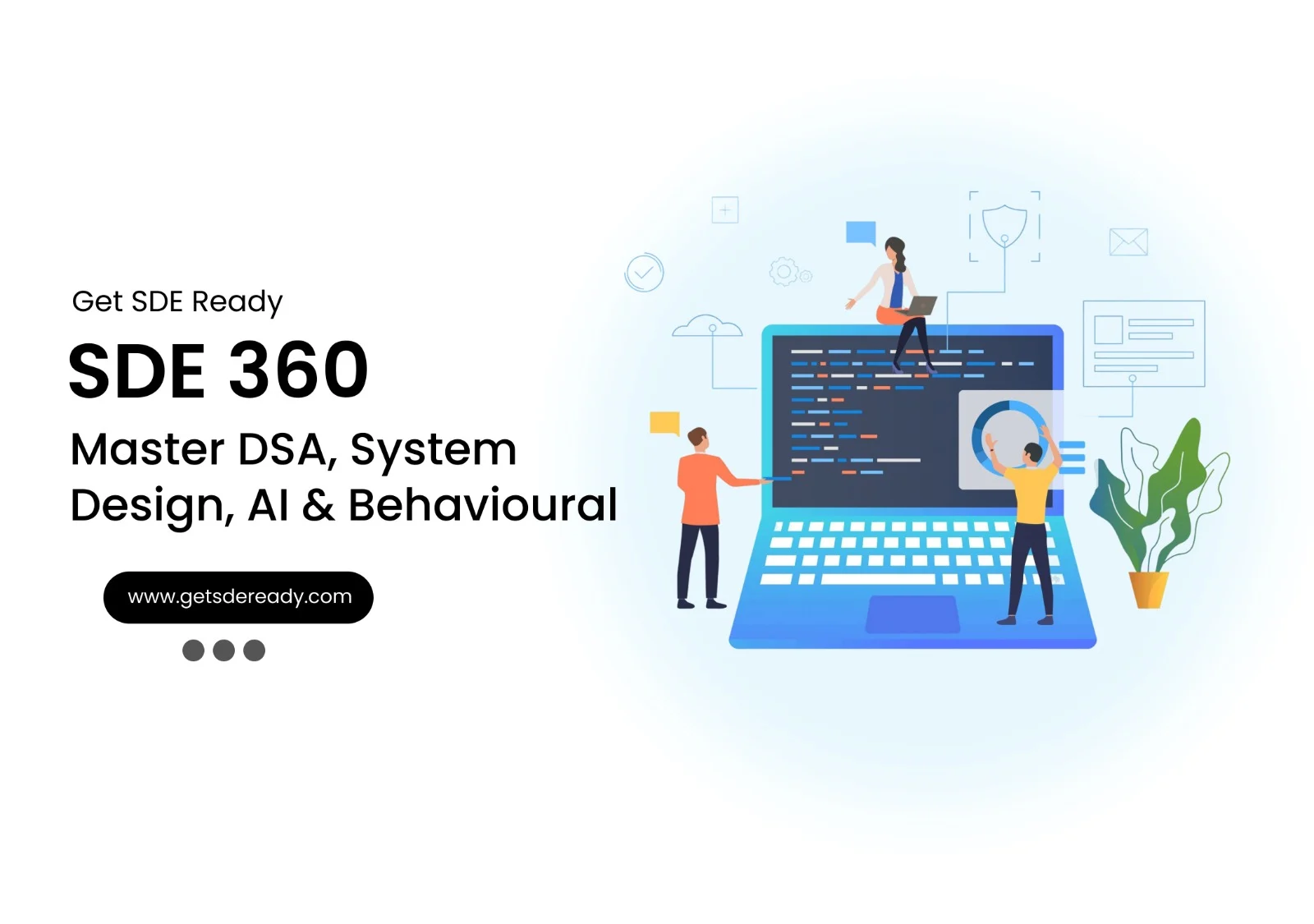
SDE 360: Master DSA, System Design, AI & Behavioural
- 100+ Live Classes & Recordings
- 24*7 Live Doubt Support
- 400+ DSA Practice Questions
- Comprehensive Notes
- HackerRank Tests & Quizzes
- Topic-wise Quizzes
- Case Studies
- Access to Global Peer Community
Buy for 50% OFF
₹39,999.00 ₹19,999.00

DSA, High & Low Level System Designs
- 85+ Live Classes & Recordings
- 24*7 Live Doubt Support
- 400+ DSA Practice Questions
- Comprehensive Notes
- HackerRank Tests & Quizzes
- Topic-wise Quizzes
- Case Studies
- Access to Global Peer Community
Buy for 52% OFF
₹25,000.00 ₹11,999.00
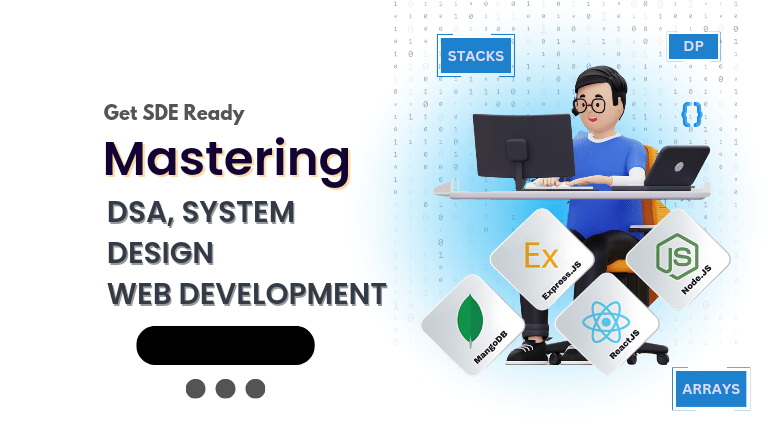
Fast-Track to Full Spectrum Software Engineering
- 120+ Live Classes & Recordings
- 24*7 Live Doubt Support
- 400+ DSA Practice Questions
- Comprehensive Notes
- HackerRank Tests & Quizzes
- 12+ live Projects & Deployments
- Case Studies
- Access to Global Peer Community
Buy for 51% OFF
₹35,000.00 ₹16,999.00
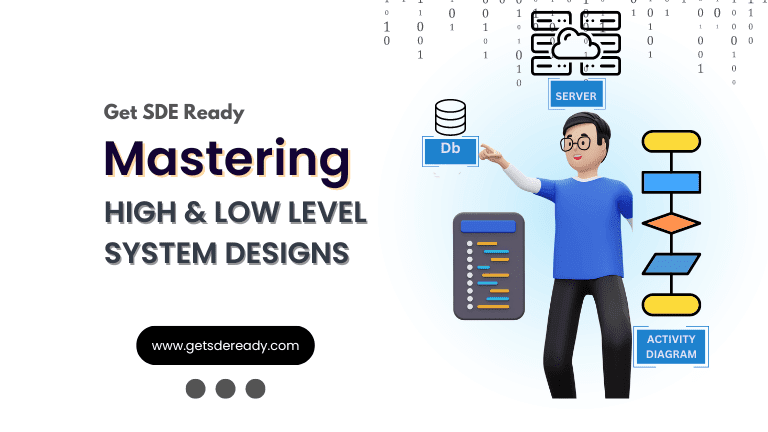
Low & High Level System Design
- 20+ Live Classes & Recordings
- 24*7 Live Doubt Support
- Case Studies
- Comprehensive Notes
- HackerRank Tests
- Topic-wise Quizzes
- Access to Global Peer Community
- Interview Prep Material
Buy for 60% OFF
₹20,000.00 ₹7,999.00
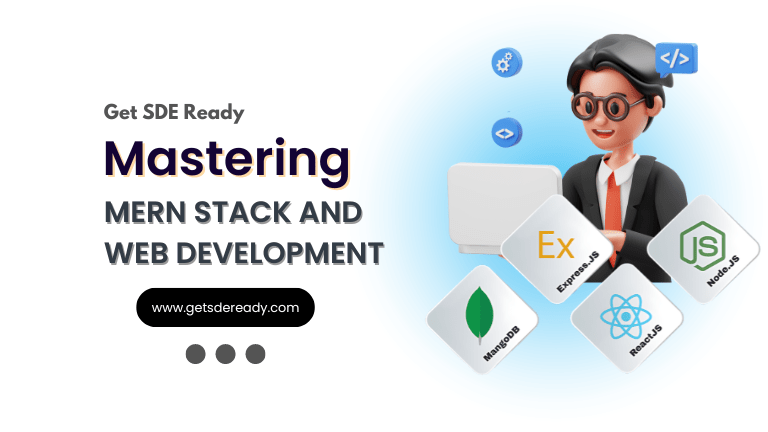
Mastering Mern Stack (WEB DEVELOPMENT)
- 65+ Live Classes & Recordings
- 24*7 Live Doubt Support
- 12+ Hands-on Live Projects & Deployments
- Comprehensive Notes & Quizzes
- Real-world Tools & Technologies
- Access to Global Peer Community
- Interview Prep Material
- Placement Assistance
Buy for 53% OFF
₹15,000.00 ₹6,999.00
Reach Out Now
If you have any queries, please fill out this form. We will surely reach out to you.
Contact Email
Reach us at the following email address.
arun@getsdeready.com
Phone Number
You can reach us by phone as well.
+91-97737 28034
Our Location
Rohini, Sector-3, Delhi-110085

